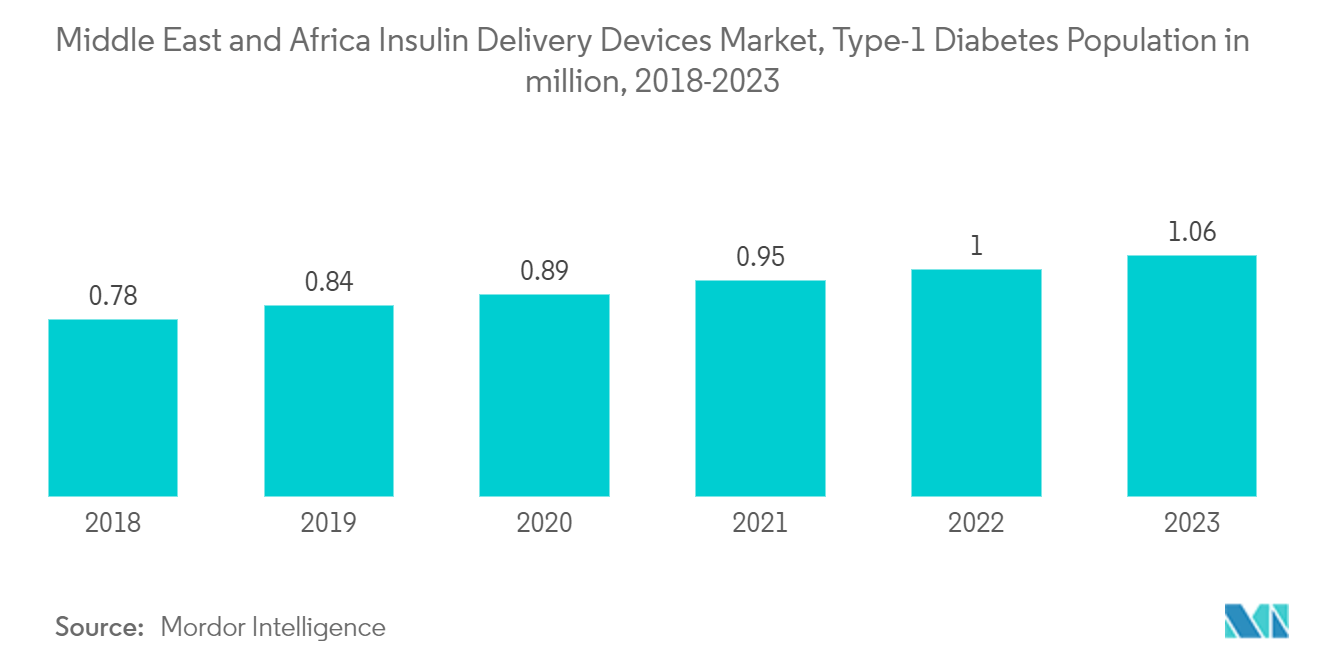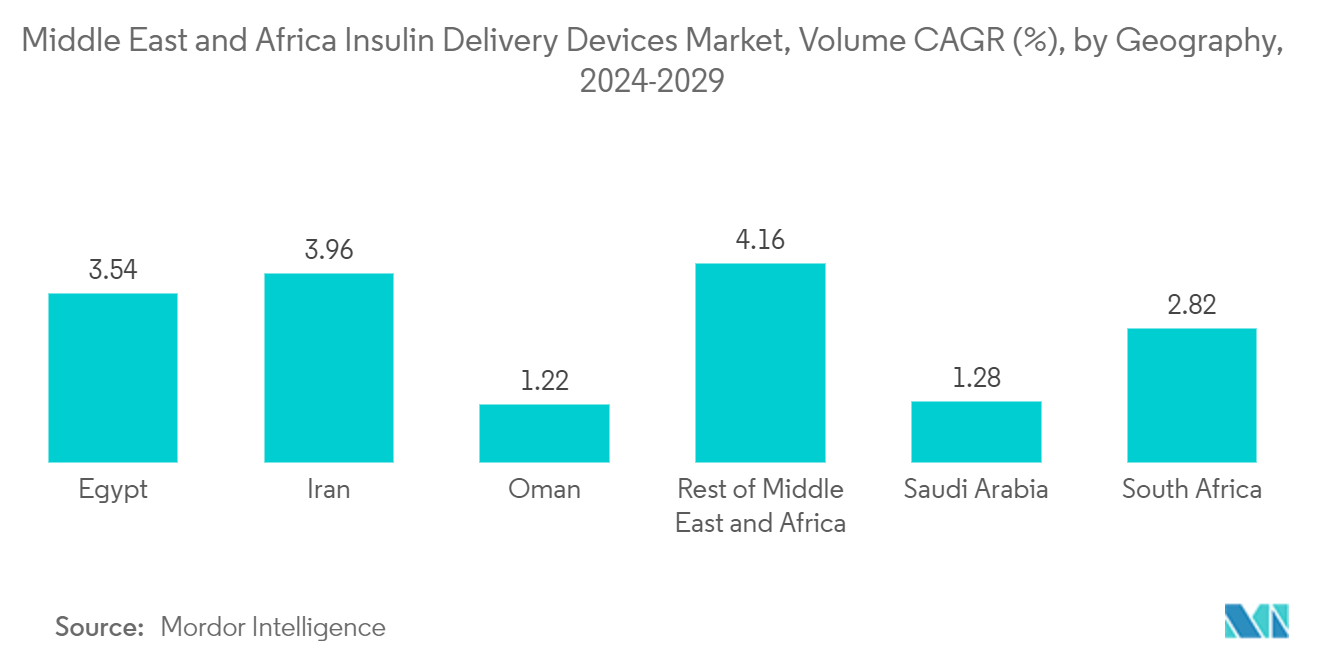Market Trends of Middle East And Africa Insulin Delivery Devices Industry
The Insulin Pumps Segment is expected to witness the highest growth rate over the forecast period
The insulin pump segment is expected to register the highest growth rate of about 4.8% over the forecast period.
An insulin pump is a small battery-operated electronic device about the size of a pager or small mobile phone. The rapid-acting insulin is delivered via an infusion set that is inserted under the skin, i.e., subcutaneously. The device delivers insulin in two ways: basal (delivering small amounts of insulin continuously to maintain cell function) and bolus (delivering a dose of insulin on demand to account for the carbohydrates in meals or to correct high blood glucose levels). An insulin pump is worn 24 hours a day but can be taken off for up to two hours when required.
Data can be uploaded from insulin pumps via web-based software. The data relating to glucose concentrations and insulin delivery can be reviewed by the health professional with the patient. Randomized controlled trials have reported improvements in glycemic control using insulin pump therapy compared to multiple daily injections.
These include reductions in blood glucose, reduced hypoglycemia, lower glycated hemoglobin, lower insulin requirements, and improved quality of life. Type-1 diabetic patients need to check their blood glucose levels at regular intervals, monitor their blood glucose levels, and adjust the insulin dosing accordingly to maintain optimum glucose levels in the body.
In the Middle East and African region, in recent years, the rate of diabetes has reached an all-time high, mainly due to lifestyle changes. Governments in the Middle East have identified the threat of diabetes and started to respond with various policies, initiatives, and programs.
Six out of 15 countries in this region still do not have a national operational action policy for diabetes. Many countries still do not have a national strategy to reduce overweight, obesity, and physical inactivity, which are important risk factors for diabetes. Most counties have fully implemented national diabetes treatment guidelines. However, constant measures are being taken to minimize diabetic complications; therefore, owing to the aforesaid factors, the growth of the studied market is anticipated over the forecast period.

Iran is expected to dominate the Middle East and Africa Insulin Delivery Devices Market over the forecast period
Diabetes is a serious public health concern in Iran, the Middle East's second-largest country, due to its high prevalence rate, growing occurrence rate, and economic impact. Diabetes-related mortality in Iran continues to rise; the age-standardized death rate from diabetes has risen throughout the years. Diabetes has significant economic consequences for the country. Diabetes, in addition to its high direct healthcare costs, is a significant risk factor for other chronic illnesses, such as cardiovascular disease.
Diabetes complications accounted for USD 412 (49%) of the USD 843 per capita cost of diabetes. Yazd, a world heritage city located in the center of Iran, has one of the highest recorded prevalences of diabetes mellitus in Iran. Other cities in Iran have varying levels of diabetes awareness. For example, in Kerman, a province south of Yazd, the prevalence of undiagnosed diabetes is only 2.7%, but it is 25% in northern Iran. Despite the widespread availability of drugs and insulin coverage in Iran, the estimated national control of hyperglycemia, hyperlipidemia, and hypertension (particularly among young men and women) remains inadequate.
However, the roll-out of many new products, increasing international research collaborations in technological advancement, and increasing awareness about diabetes among people are some of the market opportunities for the players in the market.

